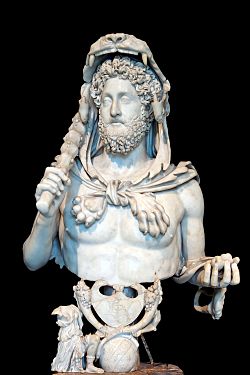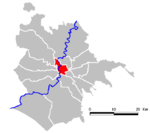Temple of Jupiter Custos
1st-century religious buildings and structuresBuilding projects of the Flavian dynastyDestroyed templesRome R. X CampitelliTemples of Jupiter ... and 1 more
Temples of the Capitoline Hill

The Temple of Jupiter Custos (Jupiter the Guardian) was a minor temple in Rome, probably on the Capitoline Hill. It was built by Domitian in memory of his narrow escape from the Capitol during Vitellius' siege. Its site is uncertain – some scholars place it on the rectangular podium in opus caementicium with basalt chips discovered in the 19th century during the construction of via del Tempio di Giove (this podium is now cut in two by the street). However, that rectangular plan does not seem compatible with a temple, which a relief in the Palazzo dei Conservatori places to the right of the Temple of Jupiter Optimus Maximus.
Excerpt from the Wikipedia article Temple of Jupiter Custos (License: CC BY-SA 3.0, Authors, Images).Temple of Jupiter Custos
Via del Tempio di Giove, Rome Municipio Roma I
Geographical coordinates (GPS) Address Nearby Places Show on map
Geographical coordinates (GPS)
| Latitude | Longitude |
|---|---|
| N 41.891825 ° | E 12.481891666667 ° |
Address
Ex Ospedale Teutonico
Via del Tempio di Giove
00153 Rome, Municipio Roma I
Lazio, Italy
Open on Google Maps









